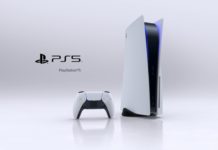Rengoku
comes to us care of Hudson and Konami as a futuristic action game based around
cyborg combat. The PSP hasn’t seen much attention from action games so far, so
there was a fair amount of pressure on Rengoku to be a worthy entrance for the
genre. Unfortunately many may be displeased.
Rengoku The
Tower of Purgatory, as the full title states, takes place within The Tower of
Purgatory. This tower serves as a robot battleground where an army of
now-useless cyborgs fight to no end. Our hero begins questioning his own
existence when he finds himself at its base. You control a ‘borg known as
A.D.A.M., able to manipulate Elixer Skins to create weapons out of body parts.
This sort of
game doesn’t even need a story, so it felt very out of place and almost
pointless. It seems they should have spent more time on improving other aspects
of the game rather than implement a needless story. As you progress through the
tower, the main character asks why he fights and begins to wonder where he came
from.
You begin
the game in an empty room facing a portal. Taking the portal moves you to the
terminal room one floor above. Each floor is equipped with a terminal room, and
at these terminals you can equip new weapons, upgrade individual stats, save
your game, move up one floor, or move down one floor.
The upward
portal will be locked on your first visit to a floor. To unlock it you must
defeat all the robots on your floor. At first you will only be able to punch,
but after defeating some enemies you’ll begin earning weapons. Taking these back
to the terminal and equipping them will produce immediate visual results. There
are equipment slots on each arm, the chest, head, and legs.
One of the
coolest aspects of the game is creating your own custom battle droid, because
the weapon isn’t just “equipped” but actually morphed into the body in a way.
Weapons may even look different depending on which body part its equipped to.
Many impressive cyborgs can be created by trying different weapon combinations.
Enemies
won’t just drop their weapons; they’ll also drop what’s called an Elixer Skin.
Elixer Skins are very much like experience, since you use them at terminals to
upgrade different statistics. You can use Elixer Skins to upgrade your max
health, physical and electronic defense, number of slots for each body part, and
the max heat resistance of each body part. Even though your character won’t get
stronger, he will be able to sustain more damage as well as use weapons for
longer durations without worry of overheating.
The biggest
problem with Rengoku is its terrible level design. I understand that Hudson was
trying to create a very industrial and mechanical setting, but every floor is
the same basic layout. There could have been floors with battle damage, floors
with moss or vines and so on, but instead every single room contains stacks of
boxes within the same square or rectangular layout.
After
leaving the terminal room you find yourself in a square room or hallway with
drab, plain textures and breakable boxes stacked in various places. All the
doors lock and you are forced to fight one or two enemies at once. After they
are all defeated the doors unlock and you repeat this process. Once you have
cleared a room like this, the doors will stay unlocked forever.
By pressing
select you can see a map of the floor you’re on. You can only see the rooms
you’ve been in, but it’s very helpful and keeps you from getting lost in some of
the bigger floors.
Another
issue with Rengoku is its controls. They’re pretty bad at first, but as you get
used to them combat becomes less of a hassle and more entertaining. The first
problem is that you must use the d-pad to move around. The analog nub is used to
look left and right only, and since you have to take you thumb off the movement
buttons to use it, it becomes totally useless.
Movement is
pretty straightforward when you are just traveling. Some tricks are holding the
R button to strafe, double-tapping a direction to quickly dodge, and pressing L
to lock onto an enemy.
Once engaged
in combat the game feels a little like Virtua On. When locked on, left and right
will strafe you around the target and you will stay locked on until either you
press L again or the enemy uses a knock-back attack. To attack, each body part
is assigned to a different button. Pressing triangle uses the weapon on your
head, square for the left arm, circle for the right, and X for the chest. Since
the legs don’t support any offensive attachments they are passive and don’t have
a button.
After
learning the combat and progressing a few floors fighting grows more intense.
Enemies grow much stronger and dodging becomes a necessity. At this point the
combat becomes very fun.
After
clearing a floor the portal to go to the next opens up. Before you can get to
the next floor, though, you have to defeat a boss. Boss fights are identical to
any normal fight, aside from the fact that boss bots are much stronger.
The overall
game is very short, but you are presented with an extended challenge once you’re
finished.
Rengoku has
some prominent flaws, but the core gameplay is fun. The level design and
graphics are very bad, but character design and animation is done extremely
well. The controls are poorly planned, but the combat is fast and entertaining.
Not everybody will enjoy this title, but if you can overcome cosmetic issues to
enjoy a game’s gameplay then I recommend you try Rengoku before buying it.
|
|
Gameplay: 7.2
The controls feel
very limiting before you learn them, and still feel slightly restricting after,
but Rengoku’s combat is still very fun. If only they allowed the use of the
analog nub for movement this wouldn’t be an issue.
Graphics: 6.5
The overly bland
background really brings down this score. The character models and animation are
very detailed, but the poor levels are too distracting to ignore.
Sound: 8.0
All the battle
sounds fit well, even though they won’t amaze or astound. The soundtrack is full
of electronic, drum and bass, and orchestral songs that fit the action well.
Difficulty: Medium
During the first
few floors you’ll find that enemies are fairly easy to defeat, and as long as
you keep your stats and weapons updated you shouldn’t have trouble staying
alive. However, later floors pose more of a challenge, and you’ll have to blend
skill and strategic equipment placing to survive.
Concept: 7.8
There are many
action RPG’s out there, but Rengoku paid a little less attention to the RPG
elements and put more work into the action. With more work in certain areas this
could have been a very good game.
Multiplayer: N/A
Unfortunately I
had no one to challenge, so I can’t accurately review the multiplayer portion of
the game. There’s both a deathmatch style of game and an item swap mode where
players can share augmentations they’ve stocked. Both seem like nice additions
to the game.
Overall: 6.8
With the poor
controls and boring levels Rengoku doesn’t feel nearly as fluid as it could.
Combat doesn’t suffer much, but could be much more epic with more creative
levels and smooth controls. It’s still a fun game to play, but not many gamers
will feel they got their money’s worth with this one.












